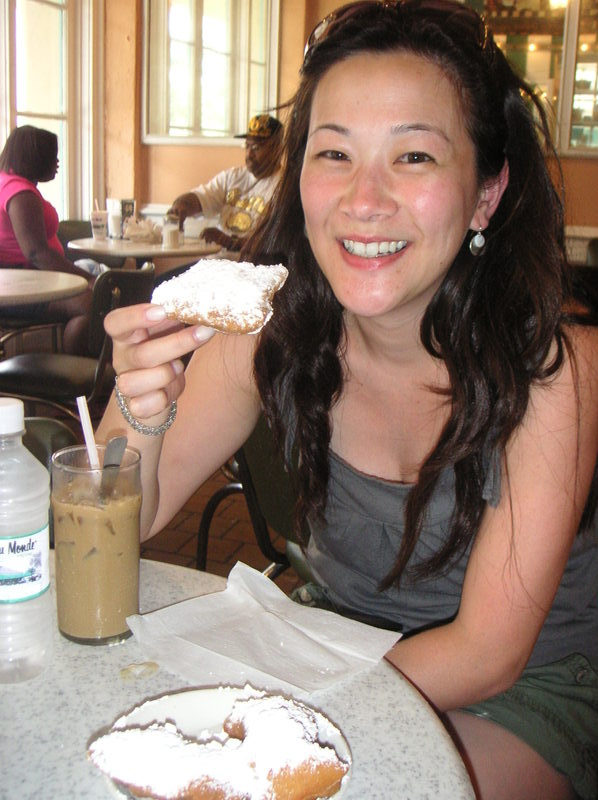* DISCLAIMER: I have done no research on this topic. Today I'm simply sharing my observations with you. I'm even making up my own terminology. I'm stating this because factual-sounding topics on this blog are typically researched.
This is the final post in the series. If you haven't already, make sure you get a chance to see The Fall of the Hornworm and The Life of the Argiope aurantia posted last week. It's been fascinating stuff in the Greenish Thumb garden! Above and below, a monarch caterpillar we found on the asclepias outside. I knew I kept this old butterfly house for a reason!


We used a plastic carry out soup container, filled it with water, put the lid on, and cut some holes out of the top. The butterfly weed cuttings stayed fresh in this little vase throughout the project.

After a few days of hearty eating, we read that there should be a stick or something for the butterfly to hang in it's chrysalis form on. When it begins to circle the top (which it did for about half a day), be ready for the big switcheroo!

The caterpillar didn't bother using the stick to hang from. Instead, it made a webbing right across the vinyl top of the butterfly house. Notice the little dot of concentrated webbing by the mouth (towards the right). There's probably a scientific name for this, but I'm learning experientially this time - and not from a book. I'm calling it "glue".

Notice that now, the caterpillar has switched sides. The back end is now on the "glue". At this point, I've been setting my timer to remind me to check on progress every 20 minutes.

Above: starting to unstick its little leg suction cups. Below: he let go all at once and swung for a few moments.

At this point, I'm getting really excited. The timer's still going off every 20 minutes. BUT...this J-shaped hanging stage lasts for about 16 hours!

Unfortunately, the process which took the caterpillar from the photo above to the photo below, was faster than the time it took me to cut up some onions for dinner. I missed the part I was looking most forward to!!!

20 minutes elapsed between the photo above and below.

For most of the next several days, the chrysalis looked as it does below.

It was about 10pm many days later when I noticed some indication of the final stage.

The next morning, probably about...11am or so, the butterfly emerged. No one was home to witness the process, but I can tell you it was just as exciting to find the chrysalis like it looks below and then to spot the huge butterfly pumping its wings.

On our first attempt to release the butterfly, the butterfly fell to the bottom of the cage, ended up on its side, and stopped moving completely. Its legs were folding in like a dead spider's. It was almost a very sad day with lessons I did not want to be teaching the kids about the (extremely fleeting!) cycle of life. We mournfully brought it back inside. After about 10 minutes of worry, just staring at it, it came back to life! There was a major storm headed our way so we kept it inside for the next day and a half. We cut off a butterfly bush bloom, some other flowers, a little dish of sugar water, and a little piece of fruit. We had no idea what to provide for it so we thought we'd cover all our bases! I would have researched this, but I tell ya, between the weather reports and the stress of the back-from-the-dead act, time was of the essence. I did NOT want the butterfly to starve to death after this whole ordeal! It was a nerve wracking couple of days.

On the next clear day, the butterfly was ready to leave for Mexico!





This map below from the USGS National Atlas, shows where our butterfly and others will overwinter.

And to leave you with something light:
Q: Why did the boy throw a stick of butter off the mountain?
A: He wanted to see the butterfly!






































































